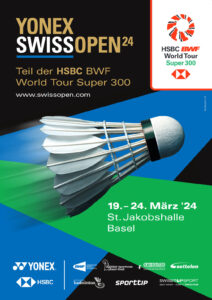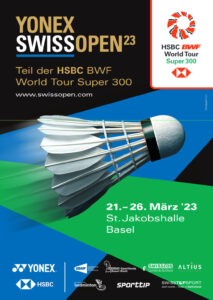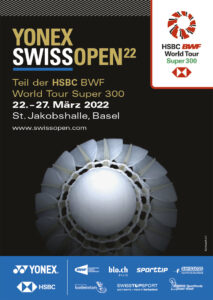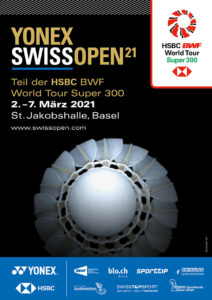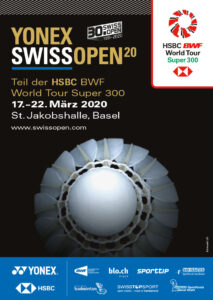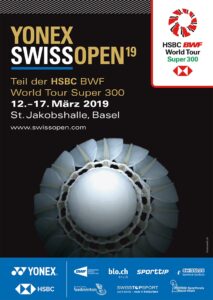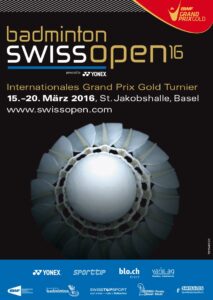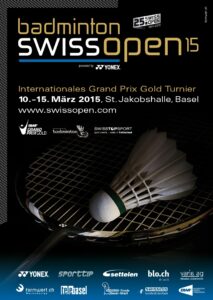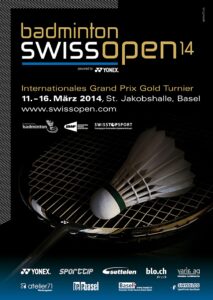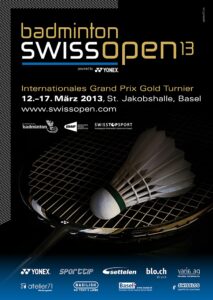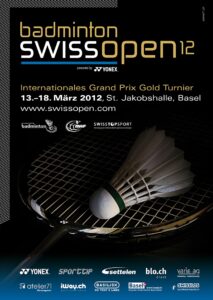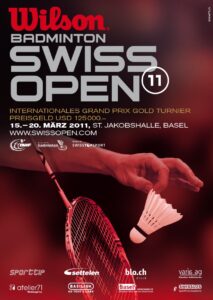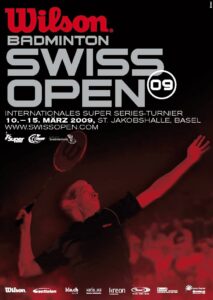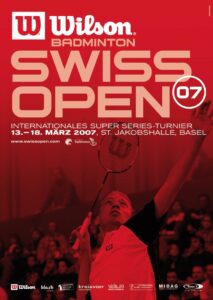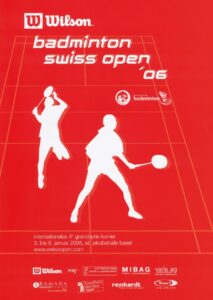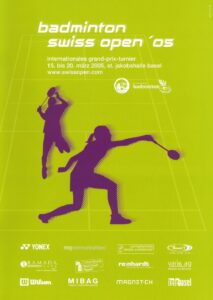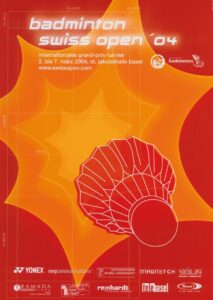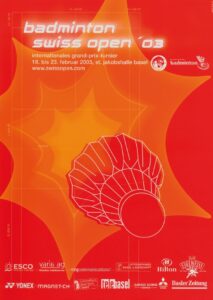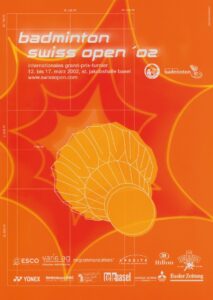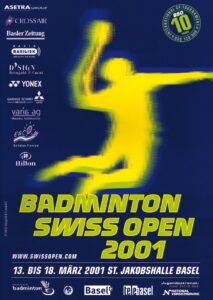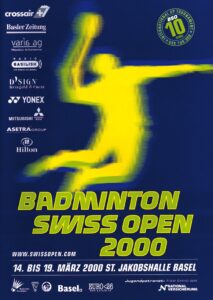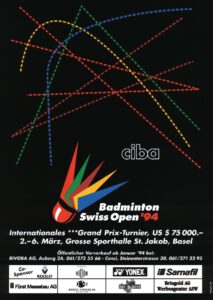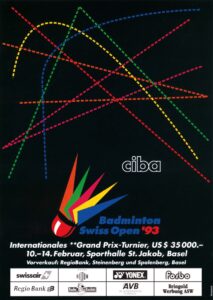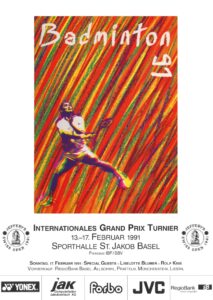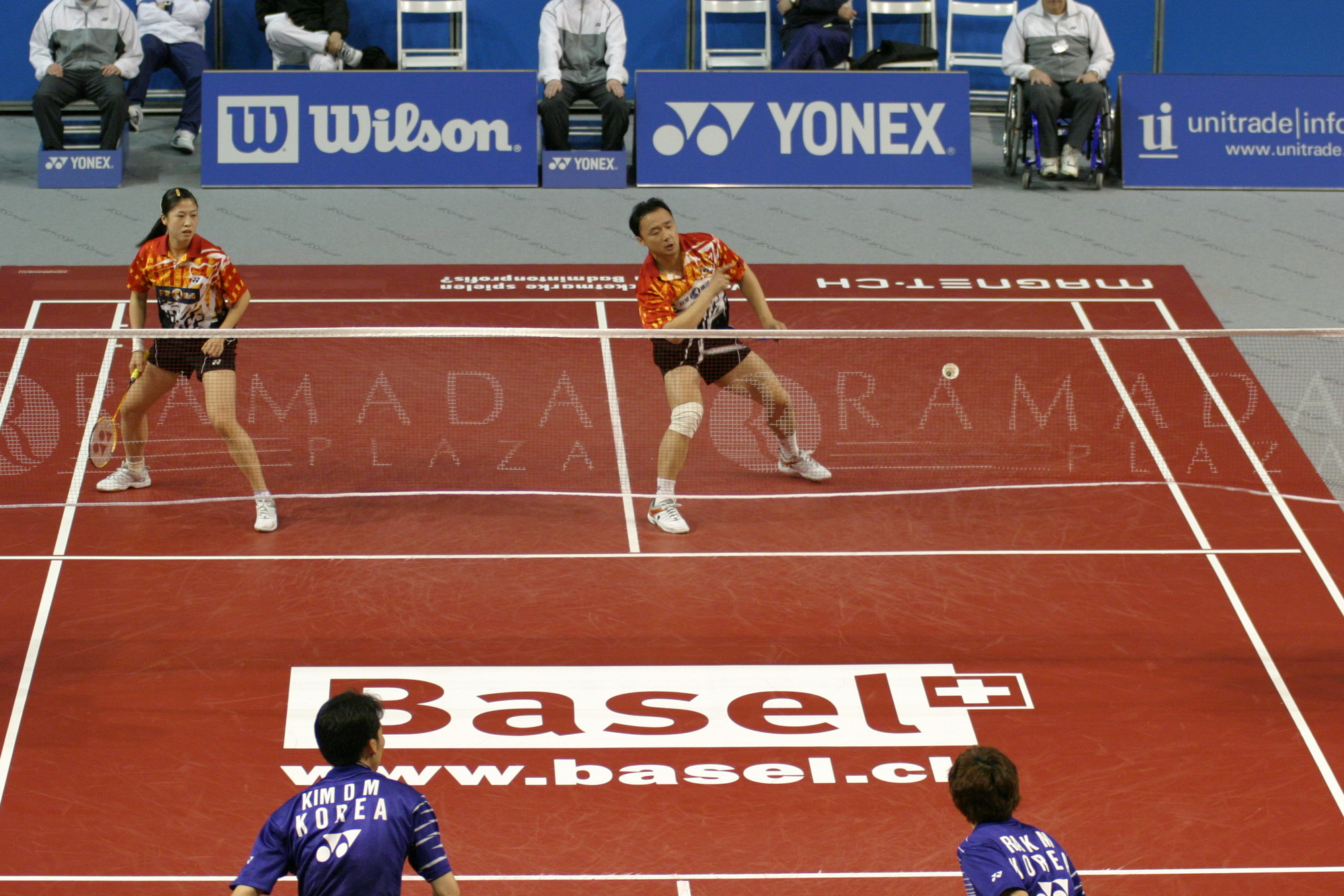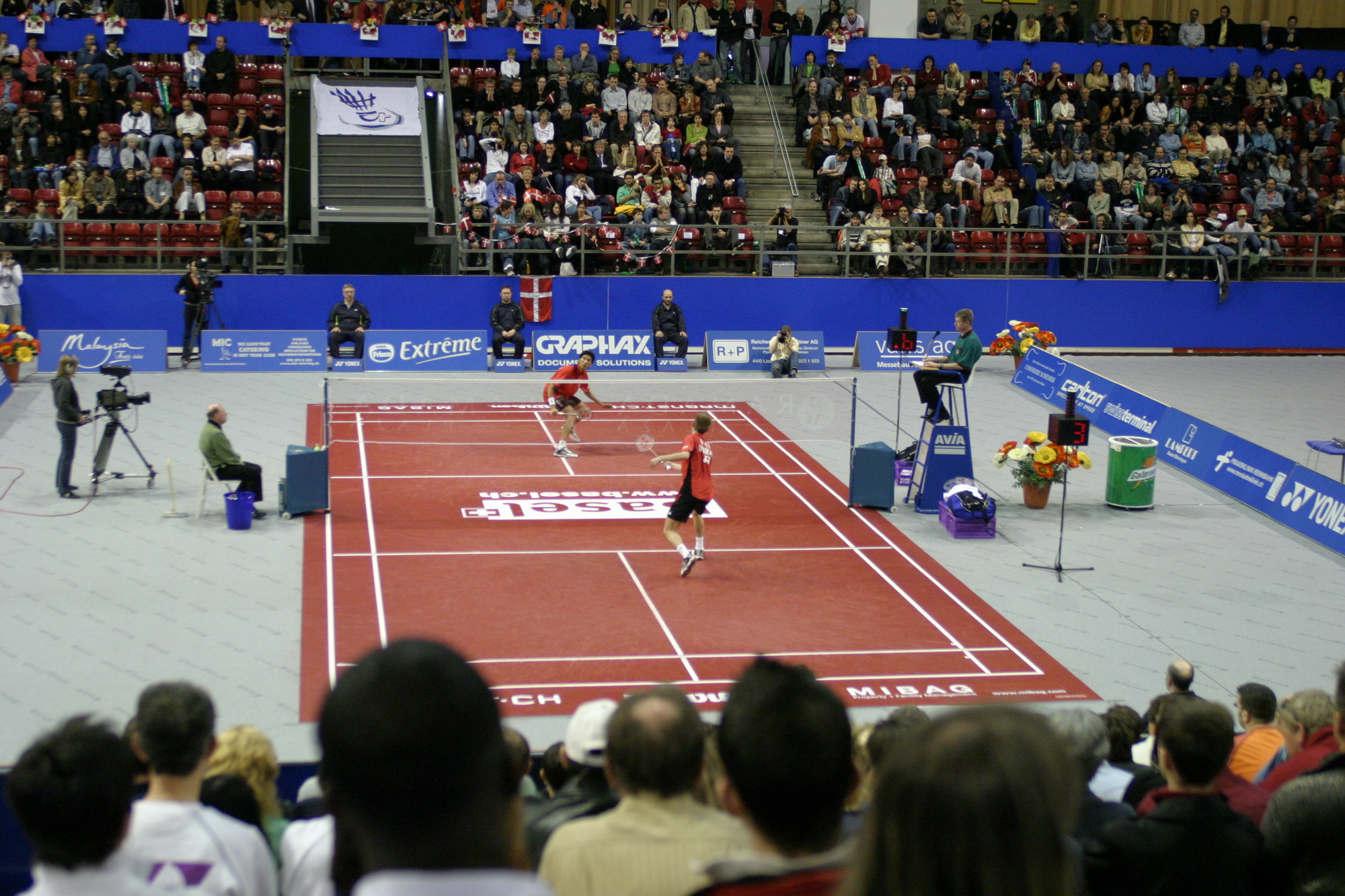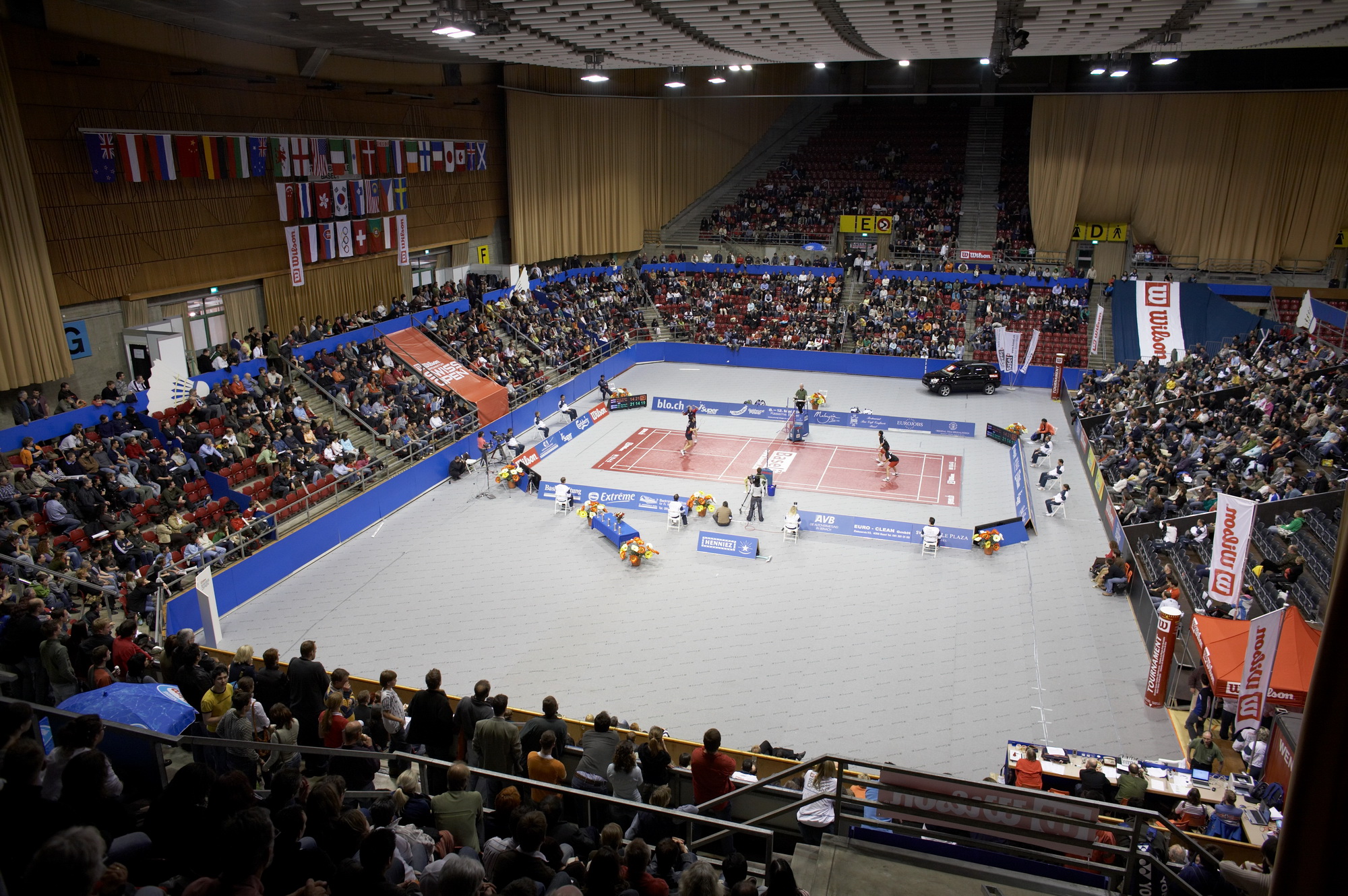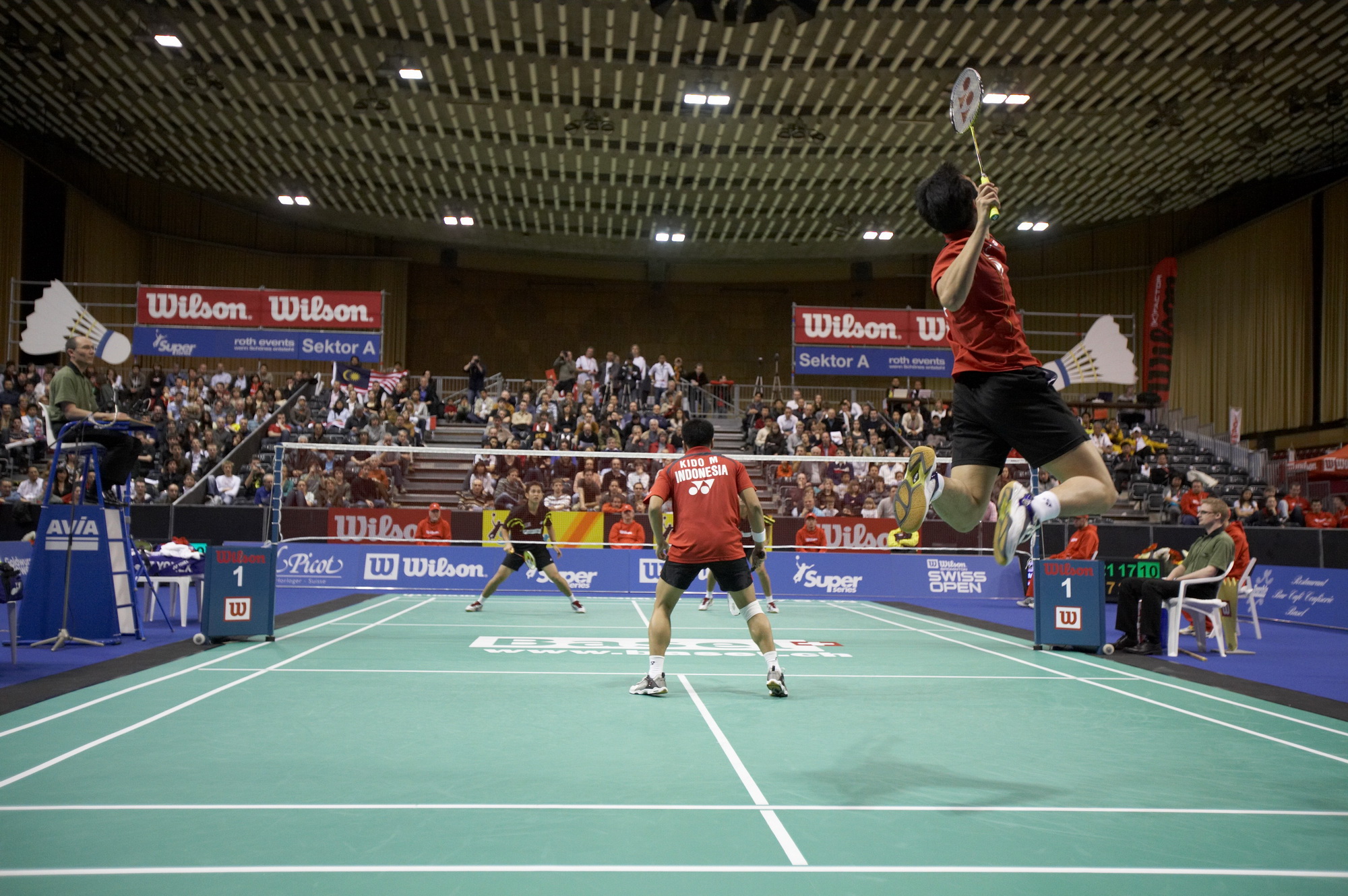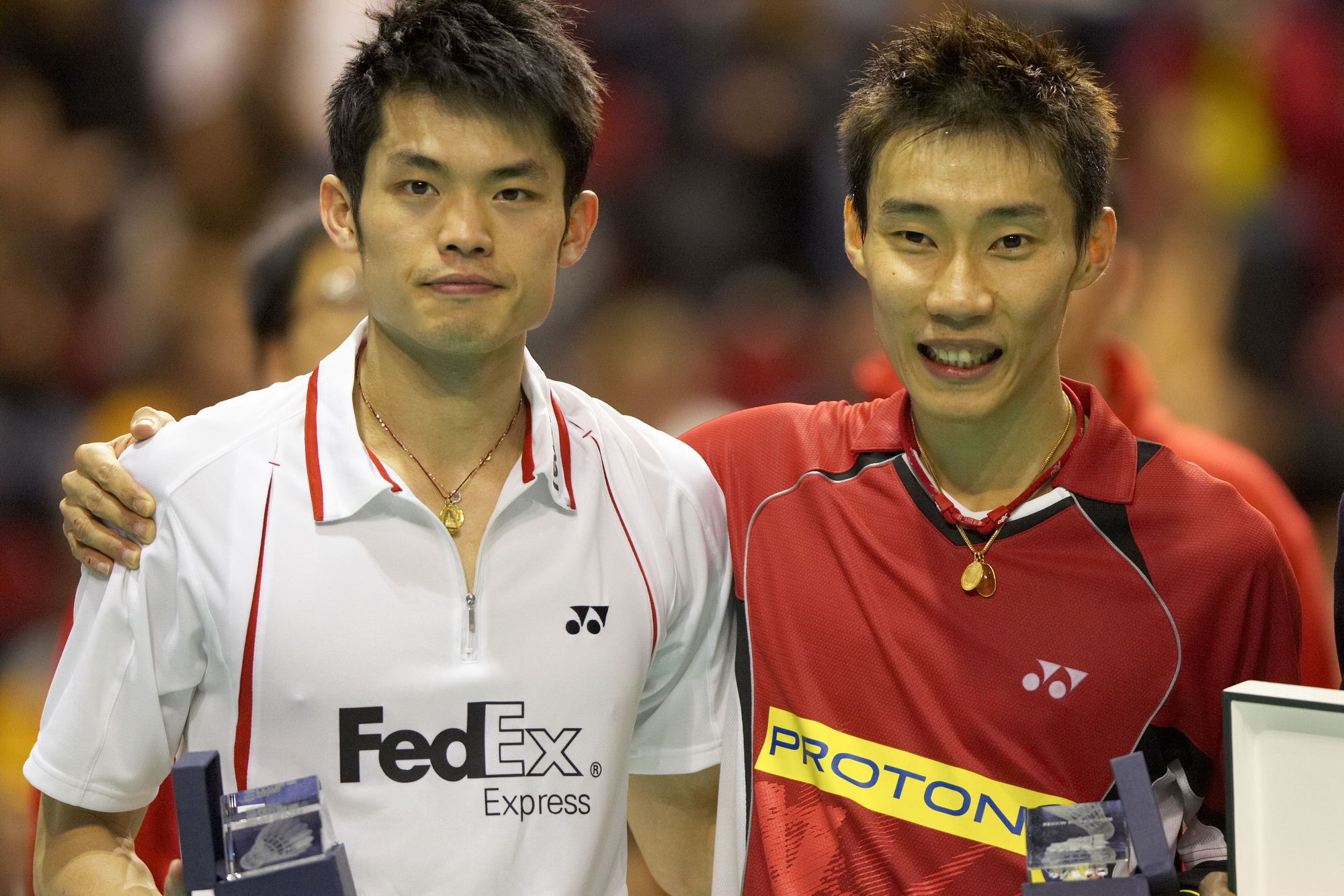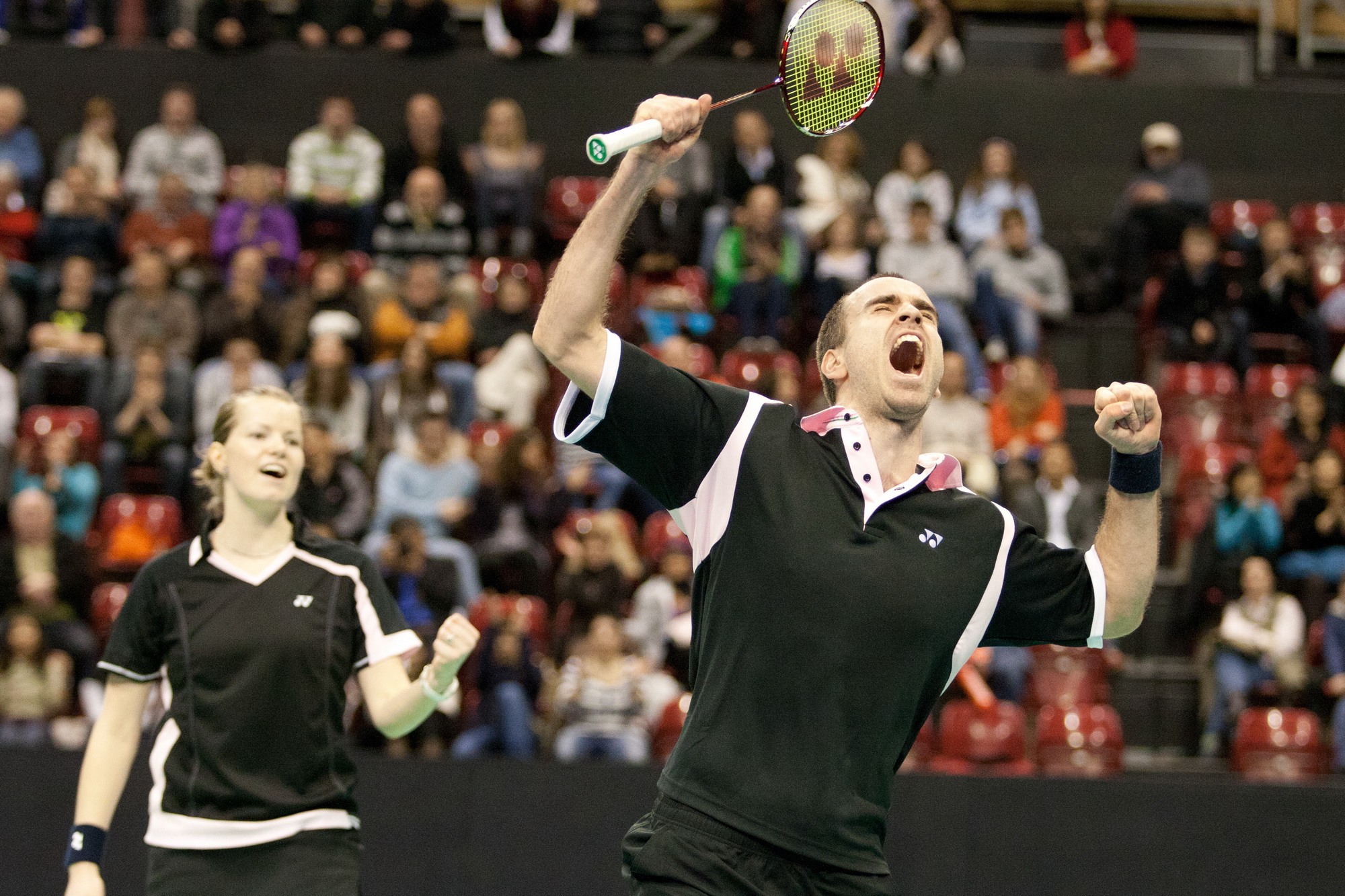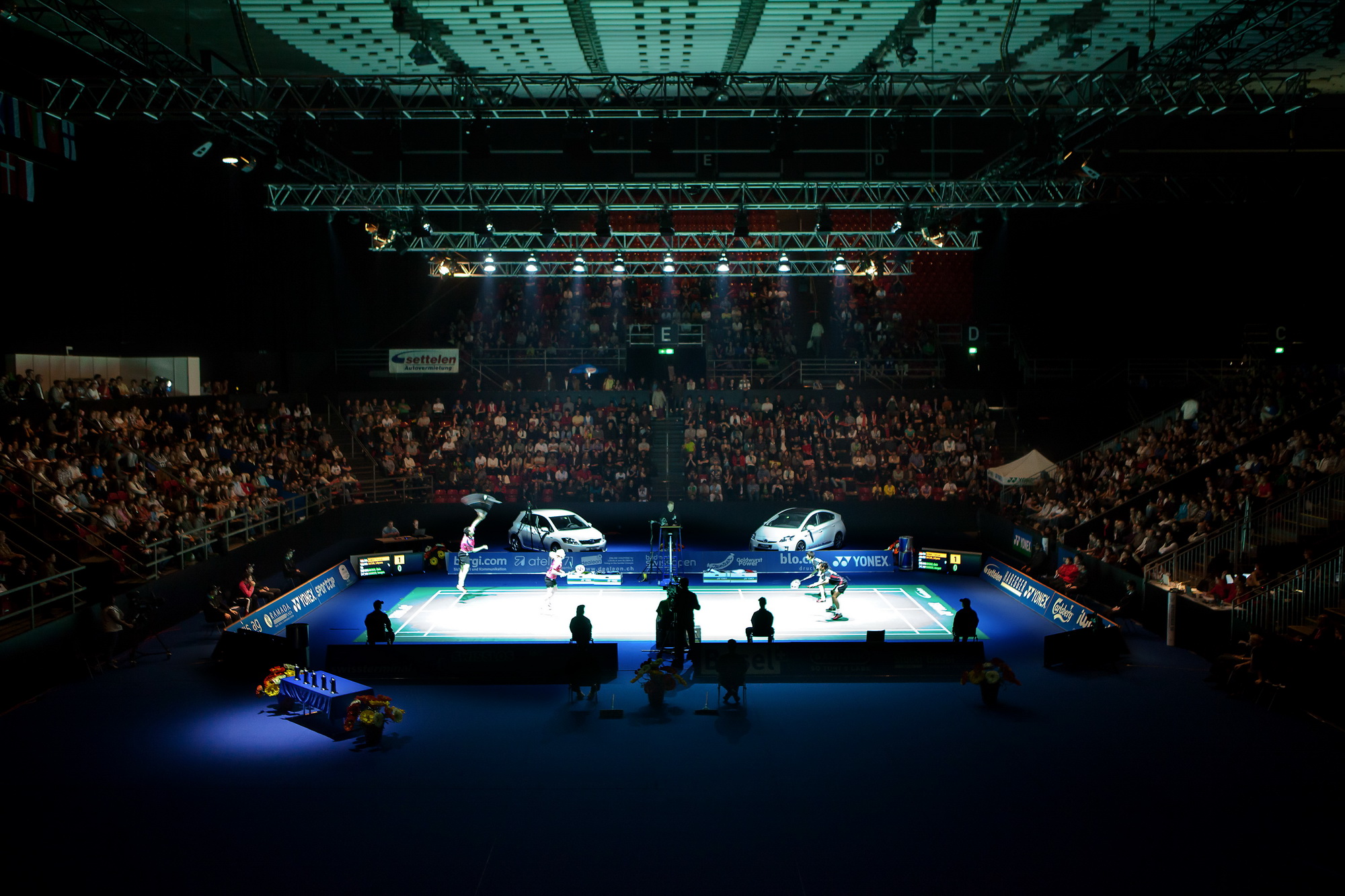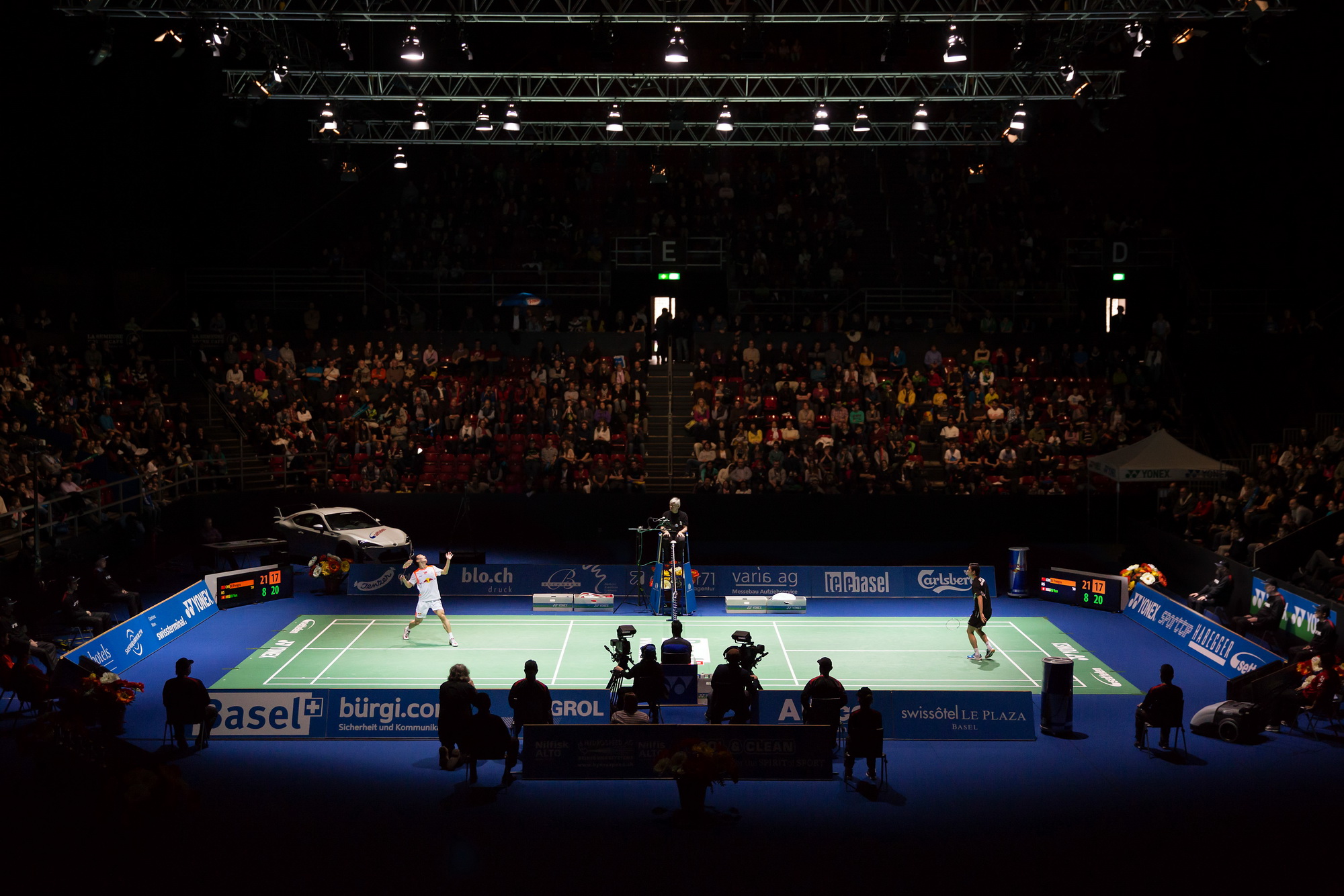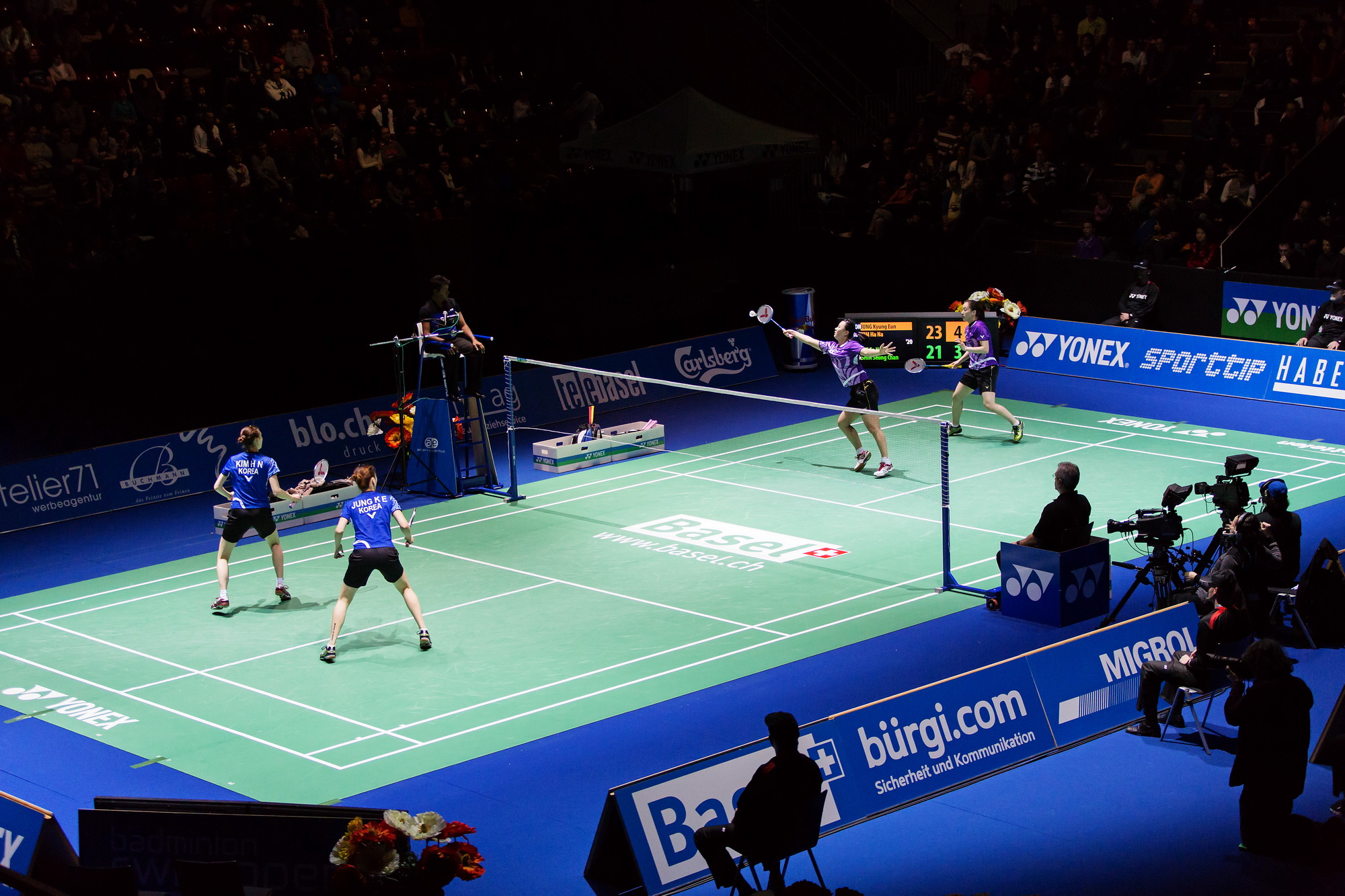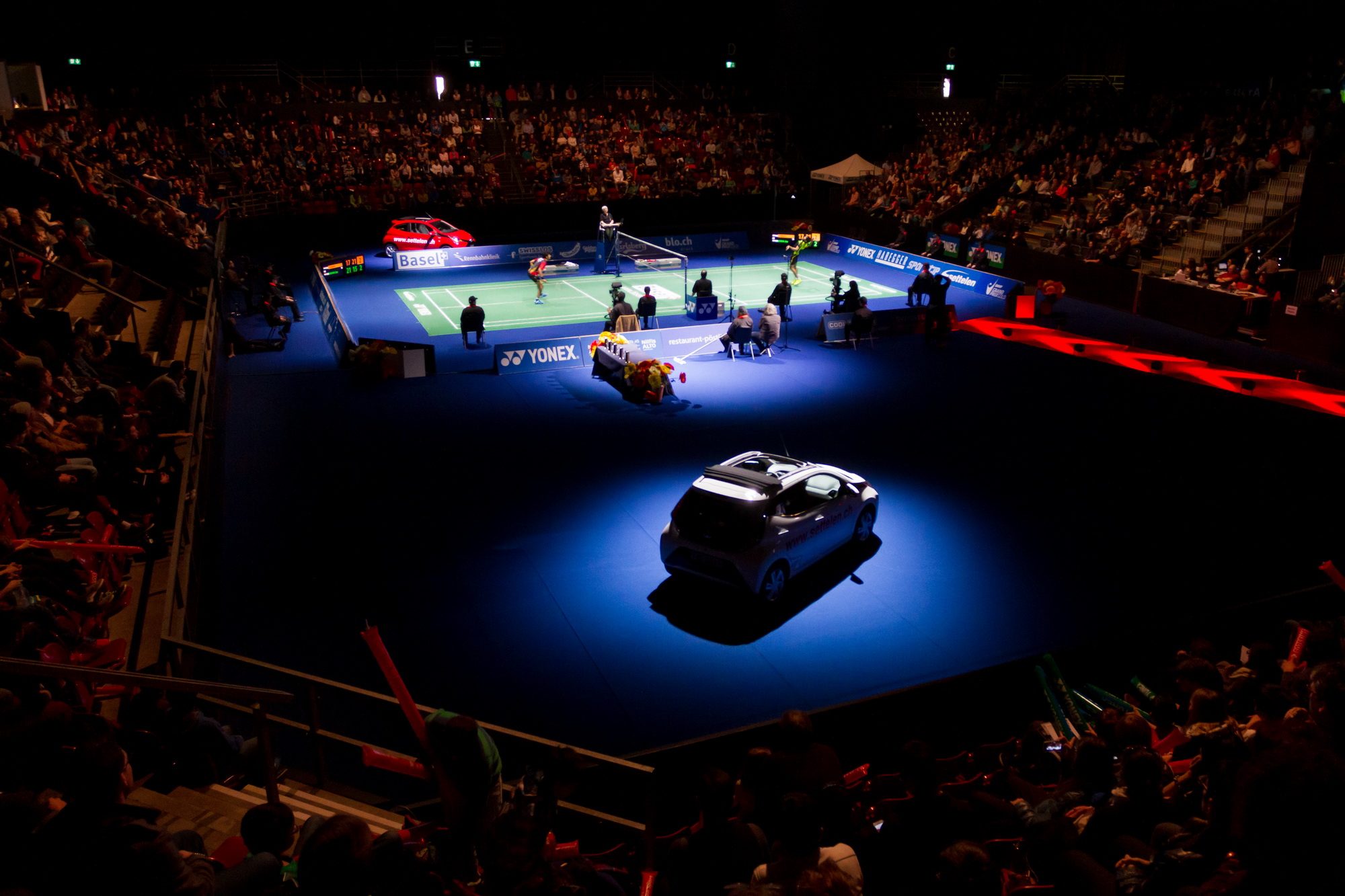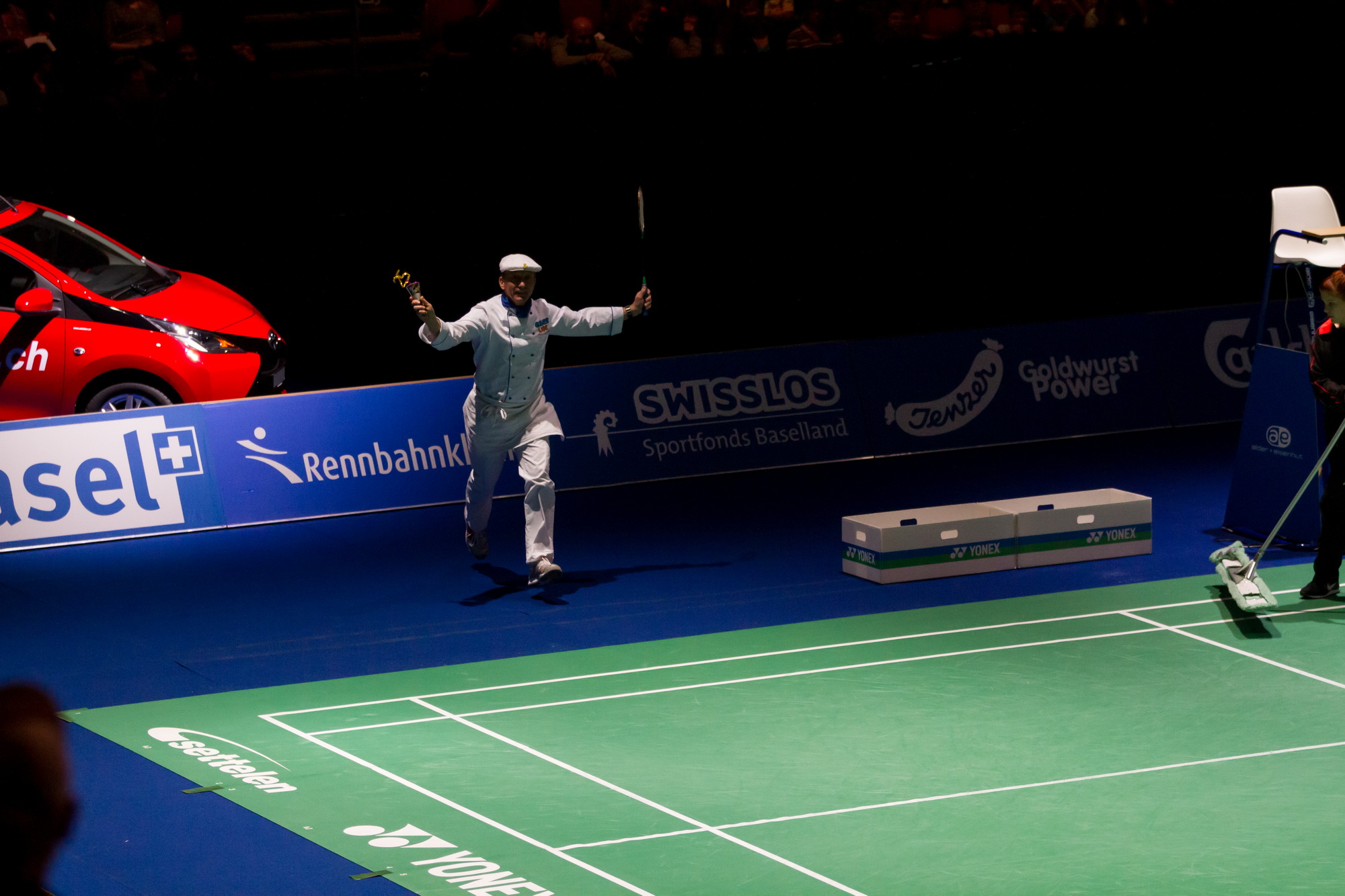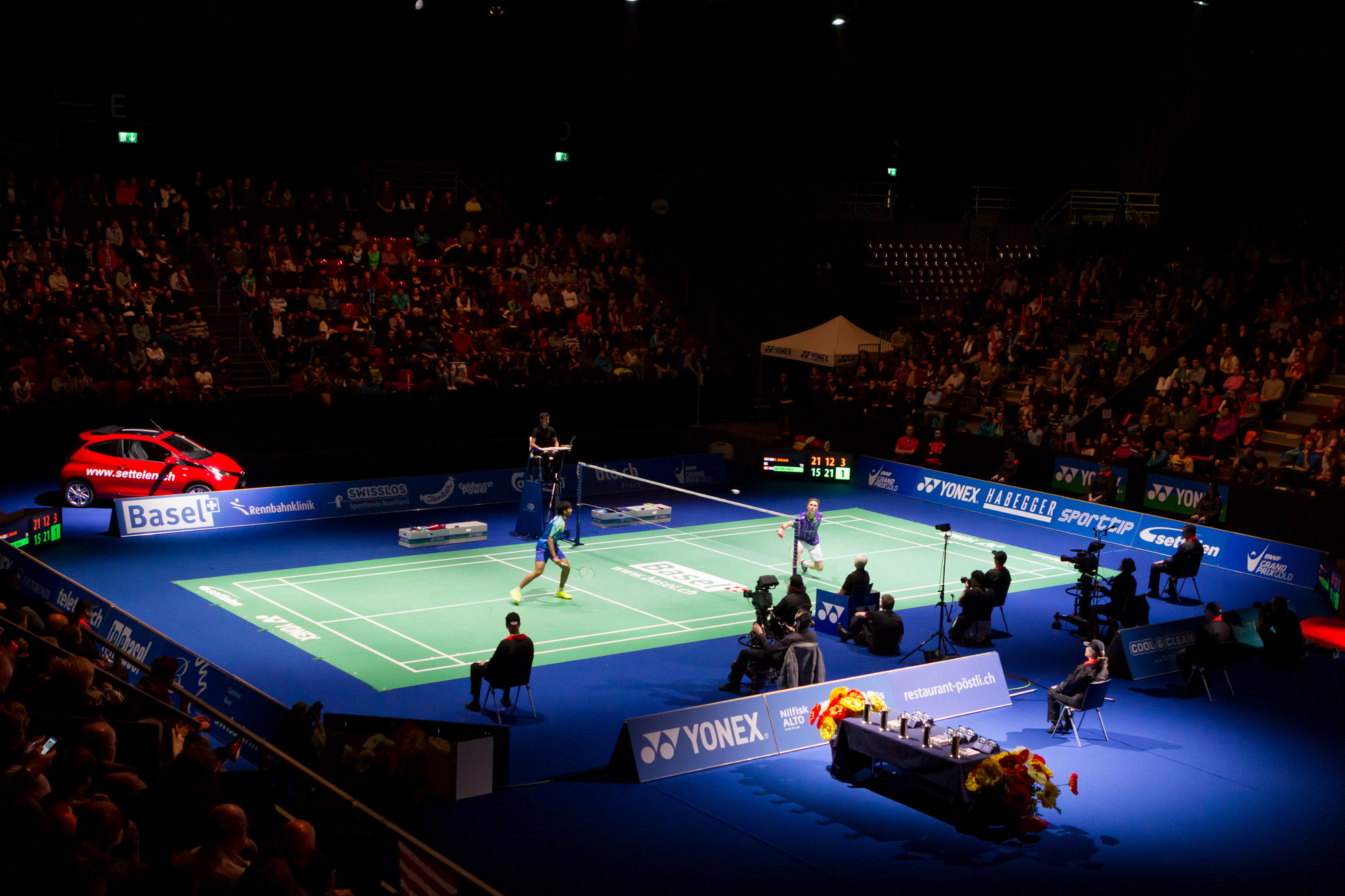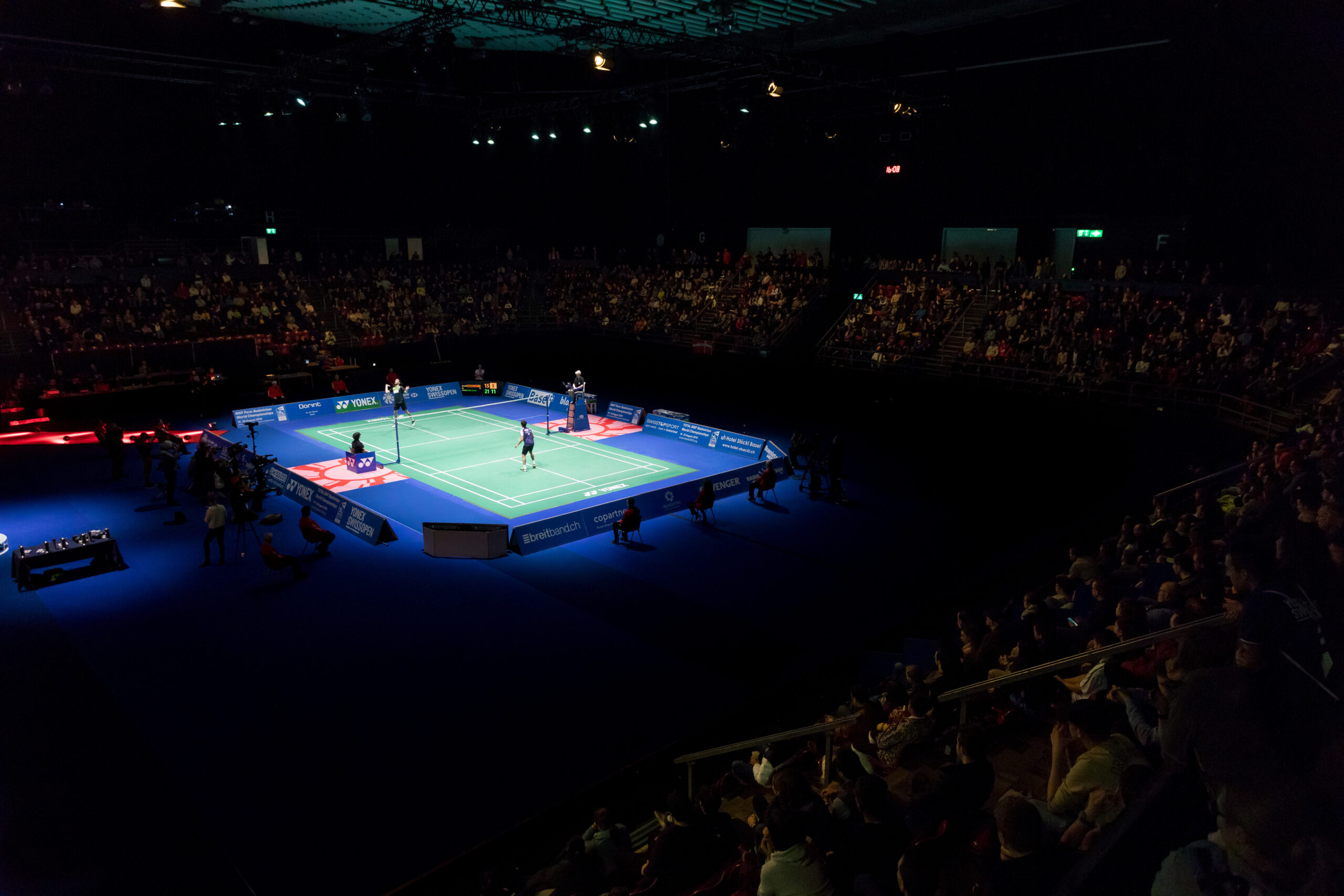MILESTONES OF THE
YONEX SWISS OPEN
In 1991, a group of badminton freaks decides to save the Badminton Swiss Open and to host them in Basel. The first edition of the event is held in the small St. Jakobshalle as a 1*-GP-tournament with USD 15’000 prize money.
Thanks to the worldwide company Ciba, the tournament develops from a 1*-GP-tournament to a 3*-GP-tournament and already after 3 years, the decision is taken to switch to the big St.Jakobshalle.
There follow 5 successful editions with Ciba as the main sponsor and the event becomes part of the established circuit and more and more of the world’s best players come to Basel.
In the following years, several improvements are made concerning the infrastructure and environment: new courts, new scoring displays, new business lounge, new restaurants, new homepage, live-scoring, live-streaming, etc. It is also a concern to secure the high level of status and prize money of the event. Now, over 15’000 spectators come to the event and over 25 TV stations cover the BSO.
In 2006, the sports goods manufacturer Wilson becomes the new main sponsor of the Badminton Swiss Open and the name changes to the Wilson Badminton Swiss Open (WBSO). The commitment of Wilson allows raising the prize money to USD 200’000 and the WBSO becomes one of the world tournaments that pay their winners the highest prize money. Basel hosts an event that has a better turnout than the Olympic Games and the World Championships.
One year later, in 2007, the Badminton World Federation (BWF) launches the Super Series: the World’s 12 best tournaments (4 in Europe and 8 in Asia). The WBSO are part of this Super Series from the beginning.
In the same year, 49 out of the 50 Top Ten players in all disciplines are inscribed at the WBSO and the pictures from Basel are shown all over the world. This helps the marketing of the event, but of course also raises the obligations: new standards for player hospitality and presentation in the arena, and new courts in the Super Series colours to increase the recognition factor with the television spectators.
Some of the high points of the tournament are from the time when the Super Series was launched by the BWF and Wilson was the main sponsor: The record of spectators per week is set at over 20’000 and each year this figure climbs slightly higher with impressive consistency. On Saturday alone, the semifinals, 5’000 spectators are welcomed. The locals have long accepted the event into their hearts, but now it seems that new spectators are coming from the whole of Switzerland and the neighbouring countries.
In 2008 and 2009 around 25 TV stations, mainly Asian, transmit the WBSO worldwide into 250 million households. The Saturday program has to be changed to suit the Asian live transmissions and is now played in an afternoon and an evening session.
In 2010, the WBSO in Basel celebrates its 20th anniversary! A 48-page anniversary brochure looks over the 20 years of history of the WBSO. 20 years of Swiss Open – improvements and nostalgia go hand in hand in the event that has once again grown. The Chinese players continue their winning streak in the singles in the anniversary year: Jin Chen celebrates his first victory in Basel and a few months later becomes World Champion in Paris. Only the Koreans can keep up with the Chinese on the highest level.
The Koreans are dominant in 2011 and the comeback tour of Lee Hyun II sees him reaching the final. The men’s singles, men’s doubles and ladies doubles are all won by the players from the Far East. The young Indian girl Saina Nehwal manages to kindle the public’s enthusiasm in the St. Jakobshalle with her powerful offensive game! Many Indian fans come to the arena every night. They even sing Happy Birthday for her, which lifts the mood in the arena and enlivens the other spectators. The Danish mixed pair Fischer-Nielsen/Pedersen manage the first European victory at the BSO since 2006. The Swiss Open has become a Grand-Prix-Gold Tournament and on the last day a new sponsoring partnership with Yonex is announced.
Saina Nehwal wins again in 2012 and after her medal at the Olympic Games in London she receives the highest sponsorship deal ever signed in the micro cosmos of the shuttle. She celebrates victory despite the strong women who travelled to Basel from China. The Japanese pair Sato/Kawamae manage the first Japanese Swiss Open victory ever in the men’s doubles which confirms the Japanese upwards trend of the last few years. It won’t remain the last victory in Basel. Peter Gade plays his last tournament in Basel, but unfortunately a foot injury prevents him from having a successful tournament. With the winner of the 1998 Swiss Open, one of the great figures of our sport retires.
The St. Jakobshalle now has a new lighting concept: only the courts are lit up while the public remains in the dark. Public and players enjoy the new atmosphere in the arena and the decision is taken to continue the lighting concept for the following years.
In 2014, the former junior World Champion Viktor Axelsen from Denmark wins the men’s singles – the first European to do so in this millennium. In the following year he nearly manages the even greater achievement of defending his title. He fails only in the final, loosing to the Indian Srikanth who is at the same time the first Indian to win the men’s single’s title. Great badminton players from the last 25 years of the Swiss Open turn the prize giving ceremony into a memorable event: including Pär-Gunnar Jönsson – the Swede who, in his time, managed to win all three disciplines in Basel! Other than Srikanth, only Chinese players win titles at the 25th Swiss Open: the Olympic Champion from London 2012, Yun Cai, shows off his consistency over many long years and celebrates his second title more than 10 years after the first.
In 2016 the orientation of the courts in the arena is changed for the first time. Since the move to the big St. Jakobshalle the 4 courts for the main event have always been laid across the hall. This year, the additional seating in the middle of the arena is taken out and the courts are laid lengthwise. This is a more democratic solution for the public and the individual courts are more easily accessible for the spectators. Finally, the German European Champion from 2012, Marc Zwiebler, shows his class in Basel: he looses in the final to the Indian Prannoy in two sets and the men’s singles title remains therefore in Indian hands. Zwiebler is the first German born player who reaches a singles final at the Swiss Open. There is also a lot going on off court this year: First talks about Basel's candidacy for the 2019 Badminton World Championship are taking place. The main topics are basic financing and the renovation of the St. Jakobshalle.
2017 is then also dominated by the World Cup bid decision, which felt exactly in the week of the Yonex Swiss Open. This is why the organizers were able to announce at the semi-final that they have been given preference over Tokyo and will be able to host the 2019 World Badminton Championships. The Chinese dominate the sport in this year, winning four out of five titles and providing seven out of ten finalists. From Europe, only the Stoeva sisters from Bulgaria are able to stand up and qualify for the women's doubles final. Also worth mentioning is Lin Dan, who was playing in Basel for the first time since 2009 and won the men's singles competition again.
The newly renovated St. Jakobshalle has a lot to offer the spectators in 2018: A large film wall has been installed, for which a drone is producing breathtaking live images. In addition, the HawkEye is being used for the first time on the final weekend. The Yonex Swiss Open is now part of the HBSC World Tour and will be given the status of a 300 tournament. However, the date 2018 is problematic. Due to a clash of dates with the All England Open Badminton Championships, the tournament has to make do with a bad tournament week in February during the carnival holidays. But the fans can enjoy two European victories again. The Danish world-class double Boe/Mogensen takes the title in the men's singles, while Herttrich and Lamfuss win for Germany in mixed. The remaining titles go to India and Japan.
The year of the World Cup before the World Cup. In view of the approaching Badminton World Championships in Basel, many badminton cracks come to the completely renovated St. Jakobshalle in 2019. The organizers use this edition as the main rehearsal for the World Championships. For example, the mobile sports floor was installed and tested. In the men's singles a large number of the top players have been present. In a high-class final, the Chinese Yuqi Shi beats the Indian Sai Praneeth. In the women's singles, the victory also goes to China, as Yufei Chen triumphs once again after her All England Open victory in Basel. The only European tournament victory is won by the Danish Bay-Smidt and Soby in mixed. All in all, a successful dress rehearsal for the upcoming World Cup in August 2019.
Full of motivation, the Organizing Committee of the Swiss Open 2020 sets about organizing the event, only to be caught on the wrong foot. Three days before the start of the tournament, the event has to be canceled at the behest of the world federation because of the covid epidemic; before that, the organizers had planned a tournament without spectators, but with a large number of restrictions.
In 2021, the Swiss Open will take place again, but it will not be a normal tournament. No spectators are allowed, and the majority of those present have to go into a bubble. In the end, Viktor Axelsen wins the men's event and Carolina Marin the women's – both came to Basel as favorites.
In 2022, fans are once again allowed in the stands. The players, their staff, the Organizing Committee and the volunteers, on the other hand, have to follow a strict testing regime. On the courts, the Indian and Indonesian delegations dominate this year, in which China is not allowed to participate because of Covid: In the women's event, India's P. V. Sindhu wins after losing to Carolina Marin in the final a year earlier. In the men's singles, Jonatan Christie from Indonesia is victorious. In the women's doubles and mixed, the Bulgarian Stoeva sisters and Mark Lamsfuss and Isabel Lohau from Germany win.
Finally, it's back to normal Swiss Open! In 2023, there are no masks, no elaborate security measures, no bubble. Just badminton. But at the highest level. And with new faces on the winner's podium. Favorite Viktor Axelsen exits in the semifinals, standout Carolina Marin withdraws at short notice. Japanese player Koki Watanabe steps in and wins, as does Thai player Pornpawee Chochuwong, who defeats Danish player Mia Blichfeldt.
Posters of the Swiss Open
